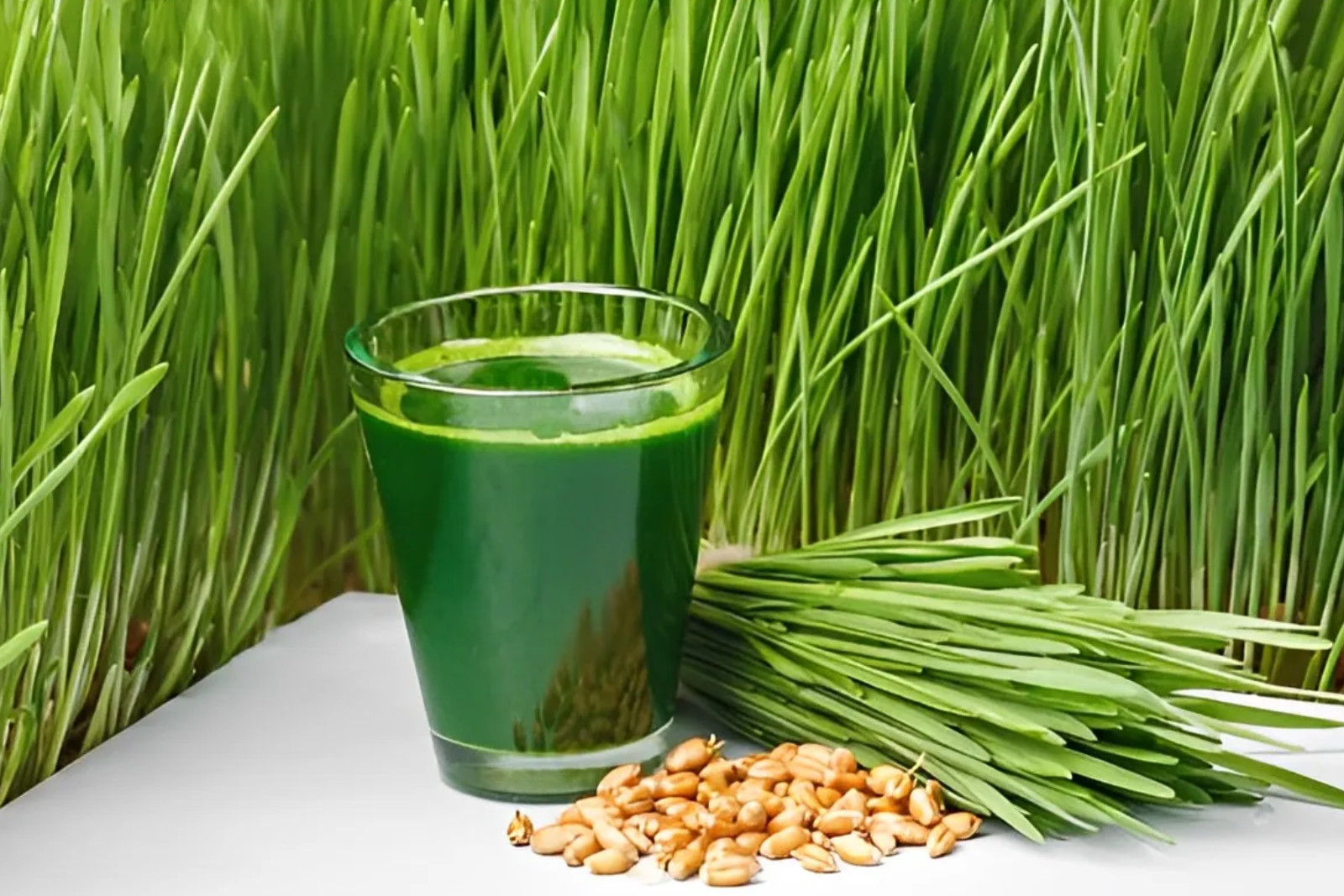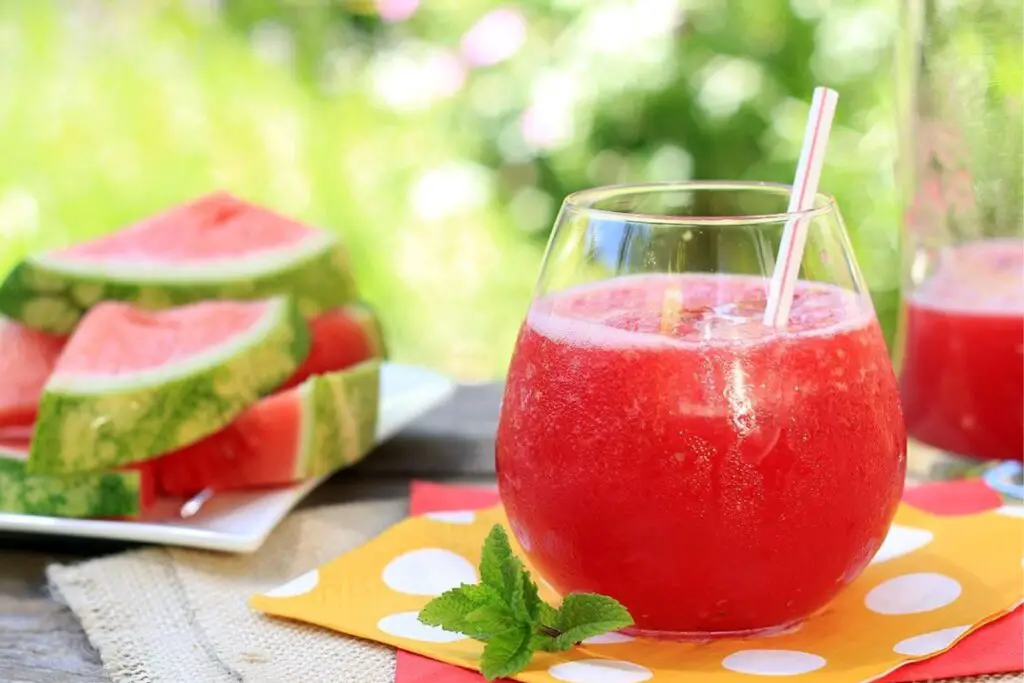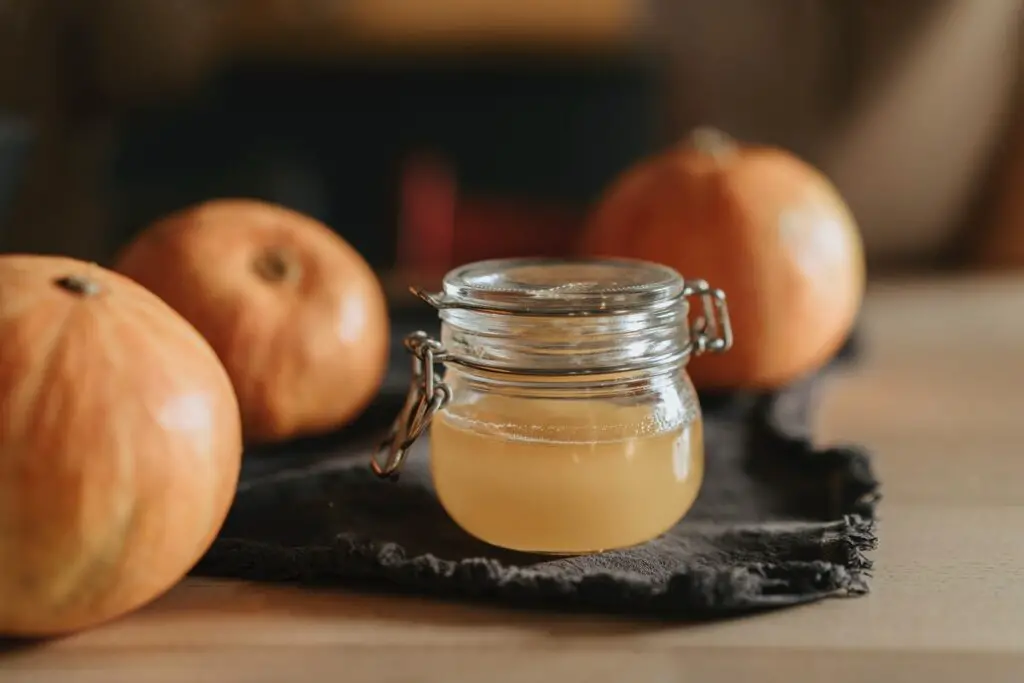
Wheatgrass juice is a popular health drink that is rich in nutrients and is known for its detoxifying properties. It is commonly consumed as a shot or added to smoothies for an extra nutritional boost. If you have an abundance of wheatgrass juice and want to preserve its freshness for future use, freezing is an excellent option. Freezing wheatgrass juice allows you to extend its shelf life and maintain its valuable nutrients. In this article, we will provide you with a step-by-step guide on how to freeze wheatgrass juice effectively to ensure its optimal quality.
Follow these steps to freeze wheatgrass juice:
Step 1: Prepare fresh wheatgrass juice
To begin the process of freezing wheatgrass juice, you’ll first need to make fresh juice from harvested wheatgrass. Harvesting wheatgrass involves cutting the young grass blades close to the soil level. It’s best to use organic wheatgrass to ensure it’s free from pesticides or chemicals.
Once you have the wheatgrass, it’s time to process it into juice. There are two common methods for extracting wheatgrass juice: using a juicer or a blender.
If you have a juicer specifically designed for wheatgrass, follow the manufacturer’s instructions to extract the juice. These juicers are designed to extract the maximum amount of juice while minimizing the pulp and fiber content.
If you don’t have a wheatgrass juicer, you can use a blender instead. Start by rinsing the harvested wheatgrass thoroughly to remove any dirt or debris. Trim the wheatgrass to remove any damaged or discolored parts. Then, add the wheatgrass to a blender along with a small amount of water. Blend on high speed until you achieve a smooth consistency.
To separate the juice from the pulp and fiber, strain the blended mixture using a fine-mesh strainer or cheesecloth. Press the pulp with a spoon or spatula to extract as much juice as possible. You can repeat this process to ensure maximum juice extraction.
The goal is to obtain a smooth and pulp-free wheatgrass juice. Removing the pulp and fiber is important because they can affect the texture and quality of the juice when frozen. Smooth wheatgrass juice freezes better and maintains its freshness and nutritional value.
Step 2: Choose appropriate containers
When it comes to freezing wheatgrass juice, selecting the right containers is crucial for maintaining its quality and preventing contamination. Here’s a closer look at why freezer-safe containers and proper cleanliness are essential:
- Freezer-safe containers: Opt for containers specifically designed for freezer use. Glass jars with airtight lids or BPA-free plastic containers with tight-fitting lids are ideal choices. These containers are durable, resistant to extreme temperatures, and prevent freezer burn, which can negatively impact the taste and texture of the juice.
- Size and shape: Consider the size and shape of the containers based on your usage preferences. If you plan to consume smaller portions of wheatgrass juice at a time, using ice cube trays can be convenient. They allow you to freeze individual servings, making it easier to thaw and use only the required amount without wasting any juice. Alternatively, larger containers work well if you want to freeze larger quantities of wheatgrass juice for future use.
- Cleanliness and sterilization: Before using any containers for freezing wheatgrass juice, it’s crucial to ensure they are thoroughly clean and sterilized. Wash the containers in hot, soapy water, rinse them well, and then sanitize them. You can sanitize the containers by soaking them in a solution of one part bleach to nine parts water for a few minutes, followed by rinsing them with clean water. This step helps eliminate any potential bacteria or contaminants that may affect the quality and safety of the frozen juice.
Step 3: Pour the juice into containers
After you have selected the appropriate freezer-safe containers, it’s time to transfer the prepared wheatgrass juice into them. Here’s why pouring the juice into containers and leaving some space for expansion is important:
- Pouring into containers: Carefully pour the wheatgrass juice into the selected containers. Use a funnel if needed to avoid spills or drips. Pouring the juice into individual containers allows for portion control and makes it easier to thaw only the amount you need at a given time.
- Leaving space for expansion: It is essential to leave some space at the top of each container, especially if you’re using rigid containers with lids or ice cube trays. Liquids expand when frozen, and wheatgrass juice is no exception. Leaving space for expansion allows room for the juice to expand as it freezes, preventing the containers from cracking or leaking.
- Ice cube trays: If you opt for using ice cube trays, fill each compartment with an appropriate amount of wheatgrass juice. It’s best to fill them three-quarters full to leave room for expansion. Once frozen, the individual wheatgrass juice cubes can be easily popped out and used as desired. This method is particularly useful if you plan to use smaller portions of the juice at a time.
Can I freeze wheatgrass juice in plastic bags instead of containers?
While it’s possible to freeze wheatgrass juice in plastic bags, it may not be as convenient as using containers. Plastic bags are more prone to leakage and may make portioning and storage challenging. Using freezer-safe containers or ice cube trays with tight-fitting lids is generally a better option for maintaining the quality of the juice.
Can I freeze wheatgrass juice in glass bottles?
Yes, glass bottles can be used to freeze wheatgrass juice. Make sure the bottles are freezer-safe and leave some headspace for expansion during freezing. Secure the lids tightly and consider using protective packaging or placing the bottles in a freezer bag for added protection.
Can I freeze wheatgrass juice in stainless steel containers?
While it is possible to freeze wheatgrass juice in stainless steel containers, it is not the most recommended option. Stainless steel containers may not provide the same level of insulation as freezer-safe glass or plastic containers, which could affect the freezing process and quality of the juice. It’s best to use containers specifically designed for freezer use.
Step 4: Seal the containers
Once you have poured the wheatgrass juice into the chosen containers, it’s essential to securely seal them. Whether you’re using containers with lids or covering ice cube trays, sealing the containers properly is crucial for maintaining the quality of the juice during freezing. Here’s why sealing is important:
- Prevention of freezer burn: Freezer burn occurs when moisture from the food evaporates, leading to the formation of ice crystals on the surface. This can cause the wheatgrass juice to become dehydrated and develop a bland taste and texture. Properly sealed containers help prevent air exposure, reducing the risk of freezer burn and maintaining the freshness of the juice.
- Preservation of quality: Sealing the containers tightly creates a barrier against external odors, moisture, and contaminants. This helps preserve the original flavor, color, and nutritional properties of the wheatgrass juice. It also prevents the juice from absorbing any unwanted flavors or odors from the freezer.
- Airtight protection: Airtight seals prevent the juice from coming into contact with the cold, dry air inside the freezer. This minimizes the chances of ice crystal formation and maintains the optimal moisture content in the wheatgrass juice.
For containers with lids, ensure they are tightly secured. Double-check that the lids fit snugly to create a proper seal. If you’re using ice cube trays, cover them with plastic wrap or place them in a resealable freezer bag, squeezing out any excess air before sealing.
Step 5: Label and date
After sealing the containers or covering the ice cube trays, it’s important to label each one with the date of freezing. This simple step of labeling and dating the wheatgrass juice containers serves several important purposes:
- Tracking storage time: By labeling the containers, you can easily keep track of how long the wheatgrass juice has been in the freezer. This is crucial because frozen foods, including wheatgrass juice, have recommended storage periods to maintain their quality and nutritional value. Properly labeled containers allow you to consume the juice within the recommended time frame.
- Rotation and usage: Labeling the containers with the date of freezing helps you practice proper rotation and usage. You can organize the containers based on their freezing dates, ensuring that older batches are used before newer ones. This way, you can avoid potential wastage by consuming the oldest frozen wheatgrass juice first.
- Quality control: Over time, frozen wheatgrass juice may experience changes in taste, texture, or nutritional content. By having clear labels indicating the freezing date, you can easily identify and discard any containers that have been stored beyond the recommended storage period. This ensures that you only consume wheatgrass juice that is of optimal quality and retains its nutritional benefits.
To label the containers, use adhesive labels, masking tape, or permanent markers. Write the date of freezing prominently on each container or ice cube tray. Make sure the labels are clear and legible to avoid any confusion later on.
Step 6: Place in the freezer
Once you have labeled and dated the wheatgrass juice containers, it’s time to carefully place them in the freezer. This step is crucial to ensure the proper storage and preservation of the frozen wheatgrass juice. Here’s why the placement and positioning in the freezer matter:
- Stability and prevention of spills: When placing the containers or ice cube trays in the freezer, make sure they are kept in a flat position. This helps maintain the integrity of the seal and prevents any leakage or spills that may occur if the containers are tilted or not properly balanced. Keeping them flat also ensures that the wheatgrass juice freezes evenly and retains its desired texture.
- Coldest part of the freezer: It’s advisable to place the wheatgrass juice containers in the coldest part of the freezer. Typically, this is towards the back or bottom of the freezer. The coldest part of the freezer helps the juice freeze faster and more effectively. It also reduces the chances of temperature fluctuations when the freezer door is opened frequently.
- Better preservation: Placing the containers in the coldest part of the freezer helps maintain a consistently low temperature, which is essential for preserving the quality and freshness of the wheatgrass juice. It minimizes the risk of temperature fluctuations that can affect the texture, taste, and nutritional value of the juice.
When positioning the containers, make sure they are not overcrowded, allowing for proper air circulation within the freezer. This helps maintain a stable freezing temperature and prevents any condensation or ice formation that could impact the quality of the wheatgrass juice.
Step 7: Freeze until solid
After placing the labeled containers or ice cube trays in the freezer, it’s important to allow the wheatgrass juice to freeze completely. Freezing the juice until it becomes solid ensures that it is properly preserved and maintains its quality during storage. Here’s why freezing until solid is essential:
- Preservation of freshness: Freezing the wheatgrass juice until it is solid helps lock in its freshness and nutritional value. As the juice freezes, the low temperature slows down the degradation processes, preserving the taste, color, and beneficial properties of the juice.
- Prevention of crystallization: Freezing the juice until it becomes solid minimizes the formation of large ice crystals. When the juice freezes slowly, larger ice crystals can form, potentially affecting the texture and taste. Freezing until solid, preferably in a colder part of the freezer, helps promote the formation of smaller ice crystals, resulting in a smoother and more consistent texture upon thawing.
- Freezing time: The exact time required for the wheatgrass juice to freeze solidly will depend on the temperature setting and efficiency of your freezer. Typically, it takes a few hours for the juice to reach a solid state. However, it’s important to note that freezing times can vary, and it’s best to refer to the texture and consistency of the juice to determine if it is fully frozen.
During the freezing process, it’s important to avoid frequent opening of the freezer door, as this can lead to temperature fluctuations and affect the freezing time and quality of the juice.
Step 8: Store frozen wheatgrass juice
After the wheatgrass juice has frozen solid, it’s important to properly store it to maintain its quality and freshness. Here’s how to store the frozen wheatgrass juice for long-term preservation:
- Transfer to freezer bags: Carefully transfer the containers or ice cubes of frozen wheatgrass juice into freezer bags. Freezer bags provide an extra layer of protection against air exposure and help prevent freezer burn, which can degrade the quality of the juice over time.
- Remove excess air: Before sealing the freezer bags, remove any excess air trapped inside. Air exposure can lead to oxidation and affect the taste and quality of the juice. Press out as much air as possible from the bags before sealing them tightly.
- Proper sealing: Ensure that the freezer bags are tightly sealed to create an airtight barrier. This helps maintain the freshness and prevents any external odors or contaminants from affecting the wheatgrass juice.
- Multiple bags if necessary: If you have a large quantity of frozen wheatgrass juice, it may be more convenient to divide it into multiple smaller freezer bags. This allows for easier portioning and reduces the risk of thawing and refreezing the entire batch each time you need a smaller amount.
How long can I store frozen wheatgrass juice?
Frozen wheatgrass juice can be stored for up to six months in the freezer. However, for the best flavor and quality, it’s recommended to consume it within three to four months. Be sure to check the label and date the containers to keep track of the storage time and prioritize consuming older batches first.
Step 9: Thaw and consume
When you’re ready to enjoy the frozen wheatgrass juice, it’s important to thaw it properly to preserve its nutritional content and quality. Here’s how to thaw and consume the frozen wheatgrass juice:
- Refrigerator thawing: The recommended method for thawing frozen wheatgrass juice is to place it in the refrigerator. Remove the desired amount of frozen juice from the freezer bag and transfer it to a clean container. Allow it to thaw slowly in the refrigerator overnight or for several hours. Thawing in the refrigerator helps maintain the integrity of the juice and prevents any rapid temperature changes that may affect its quality.
- Room temperature thawing: If you’re in a hurry and need to thaw the juice quickly, you can do so at room temperature. Keep the juice in its sealed container or bag and place it on the counter. The juice will thaw faster at room temperature, but it’s important to monitor the process to ensure it doesn’t stay at room temperature for an extended period, which may lead to bacterial growth.
- Avoid microwave thawing: It’s best to avoid using the microwave for thawing wheatgrass juice. Microwaves can generate uneven heat distribution and may negatively affect the nutritional content of the juice. Additionally, microwaving can cause some parts of the juice to heat up and potentially reduce its freshness and quality.
- Consume within 24 hours: Once the wheatgrass juice has thawed, it’s important to consume it within 24 hours for the best flavor and quality. This ensures that the juice maintains its freshness and nutritional benefits. Avoid refreezing a thawed juice, as it can lead to changes in taste, texture, and nutrient degradation.
Remember to handle thawed wheatgrass juice with proper hygiene and discard any leftovers that have been left at room temperature for an extended period to ensure food safety.
Other related questions
Can I refreeze wheatgrass juice?
No, it is not recommended to refreeze wheatgrass juice once it has been thawed. Refreezing can negatively impact the quality, taste, and nutritional content of the juice. It is best to consume the thawed wheatgrass juice within 24 hours of thawing to maintain its freshness and maximize its health benefits.
How do I know if the wheatgrass juice has gone bad after being frozen?
To determine if frozen wheatgrass juice has gone bad, look for signs such as a sour or off odor, unusual discoloration, or a change in texture, such as separation or clumping. Taste the thawed juice to check for any noticeable off-flavors or a spoiled taste. If any of these signs are present, it is advisable to discard the wheatgrass juice to avoid potential foodborne illnesses and ensure your safety.
Can I freeze wheatgrass juice that has been mixed with other ingredients, such as fruits or vegetables?
Yes, you can freeze wheatgrass juice that has been mixed with other ingredients. However, keep in mind that the freezing process may affect the texture and taste of the other ingredients. It’s best to freeze the wheatgrass juice separately and mix it with fresh ingredients after thawing for optimal flavor and quality.
Is there any difference between freezing freshly juiced wheatgrass and store-bought wheatgrass juice?
Whether you freeze freshly juiced wheatgrass or store-bought wheatgrass juice, the process remains the same. However, it’s important to ensure that both types of juice are of good quality and free from any contaminants before freezing. Always follow the proper juicing and storage guidelines for the specific type of wheatgrass you’re using.
Should I add any preservatives to the wheatgrass juice before freezing?
It is not necessary to add any preservatives to wheatgrass juice before freezing. Freezing itself acts as a natural preservative, helping to maintain the freshness and nutritional content of the juice. However, ensure that the wheatgrass juice is made from fresh, high-quality ingredients to ensure optimal preservation.








